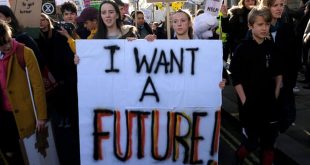Restoration of forests and coasts can tackle ‘existential crises’ but is being overlooked
The restoration of natural forests and coasts can simultaneously tackle climate change and the annihilation of wildlife but is being worryingly overlooked, an international group of campaigners have said.
Animal populations have fallen by 60% since 1970, suggesting a sixth mass extinction of life on Earth is under way, and it is very likely that carbon dioxide will have to be removed from the atmosphere to avoid the worst impacts of global warming. Trees and plants suck carbon dioxide from the air as they grow and also provide vital habitat for animals.
“The world faces two existential crises, developing with terrifying speed: climate breakdown and ecological breakdown,” the group writes in a letter to the Guardian. “Neither is being addressed with the urgency needed to prevent our life-support systems from spiralling into collapse.
“We are championing a thrilling but neglected approach to averting climate chaos while defending the living world: natural climate solutions. Defending the living world and defending the climate are, in many cases, one and the same.”
The signatories include the school strikes activist Greta Thunberg, the climate scientist Prof Michael Mann, the writers Margaret Atwood, Naomi Klein and Philip Pullman and the campaigners Bill McKibben and Hugh Fearnley-Whittingstall.
Rowan Williams, the former archbishop of Canterbury, Mohamed Nasheed, the former president of the Maldives, and the musician Brian Eno are also among the signatories of the letter, which was instigated by the Guardian writer George Monbiot.
The group emphasises that natural climate solutions are not an alternative to the rapid decarbonisation of energy, transport and farming. Both are needed, the campaigners say.
The United Nations announced a Decade of Ecosystem Restoration at the start of March. “The degradation of our ecosystems has had a devastating impact on both people and the environment,” said Joyce Msuya, the head of the UN Environment Programme. “Nature is our best bet to tackle climate change and secure the future.”
Recent research indicates that about a third of the greenhouse gas reductions needed by 2030 can be provided by the restoration of natural habitats, but such solutions have attracted just 2.5% of the funding for tackling emissions.
The greatest impact is likely to come from the restoration of forests, particularly areas in the tropics that were razed for cattle ranching, palm oil plantations and timber. But natural climate solutions must not compete with the need to feed the world’s growing population, the letter says, and must be implemented with the consent of local communities.
Effective ways of restoring habitat often overlap with the conservation of wildlife, the group says. Boosting the populations of forest elephants and rhinos in Africa and Asia would help spread the seeds of trees that have a high carbon content, for example, while more wolves would lead to fewer plants being eaten by moose.
The fastest accumulation of carbon occurs in vegetated coastal habitats such as mangroves, saltmarshes and seagrass beds, research shows, which also protect communities from storms. Here, carbon can be sequestered 40 times faster than in tropical forests. Peatlands must also be protected and restored, the group says, as they store one-third of all soil carbon despite covering just 3% of the world’s land.
Other suggested ways of removing carbon dioxide from the air include burning wood to generate electricity and burying the emissions, but to work at scale this would require vast amounts of land.
A website, Natural Climate Solutions, is launched on Wednesday calling on governments to back such measures and “to create a better world for wildlife and a better world for people”.
“Our aim is simple: to catalyse global enthusiasm for drawing down carbon by restoring ecosystems,” said Monbiot, who has written a report for the website. “It is the single most undervalued and underfunded tool for climate mitigation.”
The Guardian
 Lebanese Ministry of Information
Lebanese Ministry of Information



